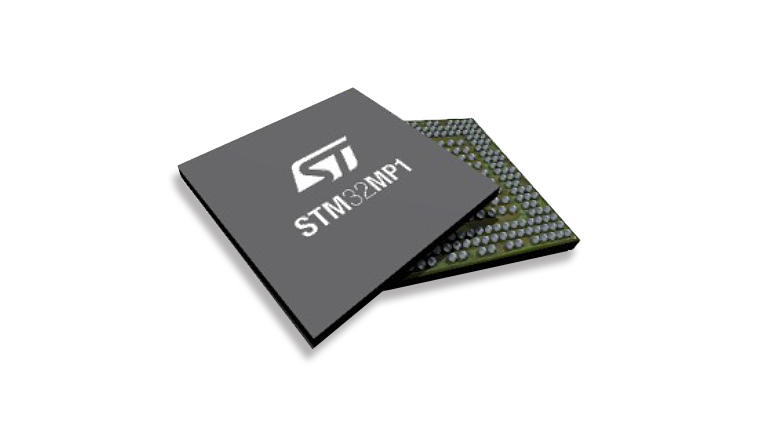STM32MP1xx
STM32MP1xx microprocessor series with dual Arm® Cortex®-A7 and Cortex®-M4 Cores

A general-purpose microprocessor portfolio enabling easy development for a broad range of applications, the STM32MP1 series is based on a heterogeneous single or dual Arm Cortex-A7 and Cortex-M4 cores architecture, strengthening its ability to support multiple and flexible applications, achieving the best performance and power figures at any time. The Cortex-A7 core provides access to open-source operating systems (Linux/Android) while the Cortex-M4 core leverages the STM32 MCU ecosystem.
The STM32MP1 comes with many benefits including a rich development ecosystem:
- Mainlined open-source Linux distribution with Android support available via partners
- STM32Cube firmware and embedded software libraries for Cortex-M4 core
- An optional 3D graphics processing unit (GPU) provides for advanced HMI development
- Rich set of digital and analog peripherals
- Advanced security features
- Optimized bill of materials (BOM) thanks to: High integration, packages compatible with low-cost PCB technologies (down to 4-layer plated-through hole (PTH) PCBs) and dedicated Power Management IC (PMIC)
- Advanced tools from ST and Partners
- Best-in-class local and online support
- Worldwide distribution channels
- Rolling 10-year longevity commitment renewed every year
Features
-
Core
- 32-bit Arm® Cortex®-A7
- 32-bit Arm® Cortex®-M4 with FPU/MPU
-
Memories
- External DDR memory up to 1 Gbyte
- 708 Kbytes of internal SRAM
- Dual mode Quad-SPI memory interface
- Flexible external memory controller with up to 16-bit data bus
-
Security/safety
- TrustZone® peripherals, active tamper
- Cortex®-M4 resources isolation
-
Reset and power management
- 1.71 V to 3.6 V I/Os supply (5 V-tolerant I/Os)
- POR, PDR, PVD and BOR
- On-chip LDOs (RETRAM, BKPSRAM, USB 1.8 V, 1.1 V)
- Backup regulator (~0.9 V)
- Internal temperature sensors
- Low-power modes: Sleep, Stop and Standby
- LPDDR2/3 retention in Standby mode
- Controls for PMIC companion chip
-
Low-power consumption
- Total current consumption down to 6 μA
Applications
- Communication
- Industrial
- Home
